Popular Gala Apple Tree Produces at a Young Age!
- Lovely Red Fruit
- Firm White Flesh & Floral Aroma
- Tangy & Slightly Tart & Hint of Vanilla!
- Pink Buds Open to Fragrant White Blooms
- Pollinators Galore!
- Early Season Harvest
- Produces at an Early Age
- Self-Fertile, But Larger Yield With Pollinators
- Tolerates Wet & Heavy Clay Soil
- Full Sun
- Easy to Grow & Adaptable
- Extended Ripening
- Stores Up To 6 Months
- Great Fresh Eating & Snacking Apple
- ~500 Chill Hours
If you only know Gala Apples from the grocery store shelf, you are missing out on one of life’s great pleasures. There is absolutely nothing that tastes as nice as homegrown fruit. Gala is the go-to sweet apple, adapted to a very wide range of climates.
An easy-care, low-maintenance variety, Gala Apple (Malus ‘Gala’) Tree produces a delicious early-season snacking apple. The fruit is firm, juicy and sweet with a slight tart flavor. One of the very best early apples, Gala has a lot going for it.
You’ll appreciate the precocious Gala Apple Tree because they are well-known to produce from a young age. Gala Apple Trees fruit young and ripen early – years before other apples.
Homesteaders, urban foodies and clean eating proponents alike can feel happy about the high fiber, antioxidants, and vitamins A and C found naturally in apples. If you’ve considered growing your own fruit tree, the Gala comes highly recommended.
First developed in New Zealand, this great-tasting import produces large, crisp apples with rich flavor. Firm white flesh, a lovely floral fragrance and a sweet, tangy snap. Hints of vanilla will make your taste buds smile.
In fact, Gala Apple Trees are in high demand around the world. Maybe it has something to do with the fact that they’ll start producing fruit as younger trees than other varieties. After all – who wants to wait for a harvest?
Galas are also dependably productive, setting a great crop year to year. Although considered self-fruitful, in some zones a pollination partner is recommended. Also, for larger harvests, we recommend planting your Gala Apple Tree with a pollinator.
Planting a pollinator partner also extends your harvest. Try a mid-season Honeycrisp, a late mid-season Red Delicious and a late-season Granny Smith to enjoy a variety of wonderful fresh-picked apples for 6 months.
It’s delightful when Gala bursts to life in spring. The beautiful pink buds will open to reveal snowy white flowers, a sure sign that the tree is well on its way to producing bushels of apples. With a Gala, you’ll have plenty to share with family and friends. We’re talking about bushel after bushel of delicious snacking apples that the whole family can love of apples from a single tree.
Throughout the summer, the apples mature to a bright, overall red color, with bold red stripes over a yellow-green background. You can see the parents (Cox Orange Pippin, Golden Delicious and Red Delicious) in its coloration.
How to use Gala Apple Tree in the Landscape
The apples are highly coveted for pies and sauces, and the tree itself would be an attractive addition to any yard.
Gala is an all-purpose dessert apple. It’s good for fresh eating, for salads, and for divine applesauce. It keeps its shape during baking. Add other firm varieties to pump up the depth of flavor in baked goods. The Gala is a great variety to add a sugary, fresh flavor to an apple juice blend. Press with Granny Smith, of other tart cider apples, to bring up the sweetness of your juice blend.
People also love the way Gala apples store so well. The apples resist bruising and can be stored for up to six months. This means you could be eating your own home-grown apples that were picked at peak ripeness as late as February and March. What a treat for you and your family!
#ProPlantTips for Care
As with all apple varieties, Gala likes slightly acidic, well-drained soil with a pH between 6.0 to 6.5. However, it will tolerate wetter, heavy clay soils.
Plant in full sun for best performance.
One of Gala’s most attractive qualities is its wide range of adaptability. They’ll grow well and produce a sweet crisp apple in the low chill climates of growing Zone 10. However, they are also very productive in the higher chill climates of Zone 4.
Once established, the Gala Apple is drought tolerant. In warmer climates, it’s important to mulch around the perimeter of your tree. This keeps the root system cool. However, please don’t let the mulch touch the trunk, leave a gap all around the trunk.
In colder climates, select a location with good air circulation. Avoid low-lying areas of settling cold with little or no air movement.
It’s easy to keep your semi-dwarf Gala pruned to remain at a safe picking height. Simply plan to do summer pruning to keep your tree to a reasonable height, say 6 – 8 feet tall.
This tree is a perfect blend of modern and old-fashioned, and it’s big on taste as a result. The Gala is an attractive flowering tree that produces apples that fall nothing short of irresistible in the taste department. It’s also a beautiful tree that’s an asset to your landscape.
Though there are many different selections of the Gala apple, the original Gala is the one most referred to as the best. Gala Apple Tree is an easy-to-grow and adaptable tree that matures quickly.
Order at NatureHills.com today!
Gala Apple Tree Frequently Asked Questions
When to Plant Gala Apple Trees
Planting Bareroot trees as soon as you can dig a hole in spring and until hot weather, the earlier the better. Plant container Apple trees throughout the growing season with complete success – that is the benefit of container plants – to extend the planting season. Your County Agricultural Extension Office is a great resource for first and last frost dates in your area.
How to Plant Gala Apple Trees
Dig a large hole only as deep as needed to accommodate the bareroot or container root ball, and twice as wide. Add Nature Hills Root Booster to speed root establishment. Remove the pot or bag and situate it into the hole so the top of the soil (soil line if bareroot), is level with the new location’s soil being careful not to plant too deep. Water in again very well and backfill with the same soil you dug up, tamping down gently to ensure there are no air pockets.
Top off with a 3-4 inch thick layer of Arborist mulch. Consider staking your tree to keep its trunk growing straight for the first year to ensure it stands tall against strong winds and drifting snow.
When to Prune Gala Apple Trees
Trim off any broken branches from delivery as soon as you take them out of the box. Prune and trim apple trees while dormant, in late winter or early spring, before you see new growth.
How to Prune Gala Apple Trees
Dormant prune to:
- Remove any double leaders or narrow crotch angles
- Eliminate any crossing branches
- Thin interior branching and leave the fruiting spurs and strong branches in place opening up the canopy
- Branching at least 24-36 inches above the ground
Prune Apple trees in the summer to:
- Control size and shape by reducing the length of longer new growth on vigorous trees
- Remove water sprouts on the main trunk or older branches in the crown
- Remove suckers at the base of the trunk
- Thin fruit during heavy years on established trees
How to Care for Gala Apple Trees
Growing an apple tree is easy when proper soil, good drainage, attention to moisture, and regular fertility are maintained. Once you’ve chosen an apple tree that works for your climate, in the size you need for your landscape, and its pollinator (if needed), then you’ve accomplished half the battle!
- Apple trees do best in full sun and well-drained soil
- Water your apple trees when it gets dry – especially during the fruit production stage, and drought periods to keep it stress-free
- Use arborists’ wood chips to mulch over the roots of your apples and have your soil tested to see what your soil may be lacking before adding fertilizers
- Maintenance pruning and shaping
Apple trees will tolerate a wide range of soils, so long as water and nutrients are not limited and the pH level is adequate.
How to Fertilize Gala Apple Trees
For the first year, water alone is most important. It is always best to get a soil test to see what your soil is lacking before adding more fertilizers. Once established, a fertilizer routine may be beneficial. We do offer some excellent slow-release organic options, applied according to the package directions.
Fruit trees need more phosphate and it’s possible to apply too much nitrogen which affects the soil’s pH. Test soil acidity or alkalinity using a pH Tester.
Fertilize in spring when you first see new growth emerging.
- Don’t overdo it
- Phosphates are your friends
- Pay attention to pH in areas with extremely high or low soil pH
- Follow the directions
Gala Apple Tree Pollinating Info
Gala is self-fruiting and doesn’t need a pollinating partner, but will bear more fruit when paired with these varieties:
Harvest Times for Gala Apple Trees
Gala’s are typically ready to harvest in August.
Early-Season? Mid-Season? Late-Season? The terminology can be confusing for new apple tree growers. Weather, climate and your tree determine when it’s ripe.
For Apples:
- Early-season is usually June-July
- Mid-season can be August-September
- Late-season can be from late September-November
The growing season consists of spring, summer, and fall, and varies with climate and weather. Areas with longer growing seasons in the warmer hardiness zones can greatly affect the harvest times for each particular apple variety grown in your area. Learn which growing zone you are in.
What Shipping Options Do You Offer?
Our goal is to deliver the hardiest plants by avoiding extreme high and low temperatures. Check out our shipping schedule for more information and to learn our wills and won’ts when it comes to shipping plants.
Rootstocks Explained
Apple trees have been grafted onto different rootstocks since before the mid-1800s. Different rootstocks are used to improve the anchoring of trees, eliminate diseases, and reduce the natural mature size of the tree itself. While there are many different types of rootstock, they are all labeled as being either Dwarf, Semi-Dwarf, or Standard.
The apple descriptions, including flowering, pollination, and apple characteristics are the same whether the plant is grown on a standard rootstock or some varying dwarfing rootstock. The overall size can vary by climate and soil but the understock used is ultimately what affects the mature size.
There will be some variation in sizes but as a guide, we are suggesting the overall mature size of these apple varieties are:
Semi-Dwarf Apples
- Height: 12-18 feet
- Spread: 10 – 15 feet
Standard Apples
- Height 18 – 25 feet
- Spread: 15 – 18 feet
Remember that all fruit tree sizes can easily be altered if needed by simple pruning as the trees grow and develop.
PLANT HIGHLIGHTS
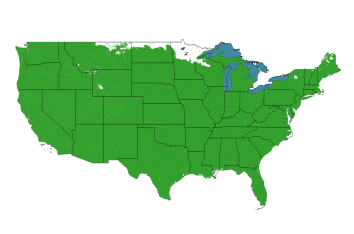
| Brand | Nature Hills’ Choice |
|---|---|
| Botanical Name | Malus ‘Gala’ |
| Mature Height | Semi-Dwarf Height: 12 – 18 feet | Standard Height: 18 – 25 feet |
| Mature Spread | Semi-Dwarf Spread: 10 – 15 feet | Standard Spread: 15 – 18 feet |
| Sun Exposure | Full Sun |
| Soil | Widely Adaptable |
| Moisture | Low Once Established |
| Growth Rate | Medium |
| Flower Color | White |
| Foliage | Green |
| Foliage Color | Green |
| Harvest Time | Mid Season |
| Pollinator Friendly | Yes |
| Fruiting Time | Early Season |
| Pruning Time | When Dormant |
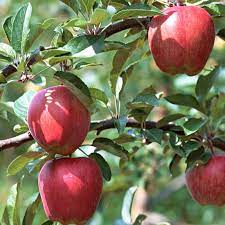
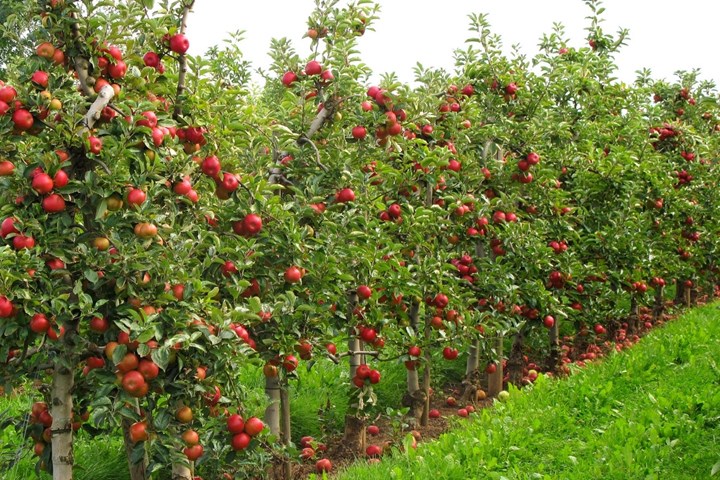
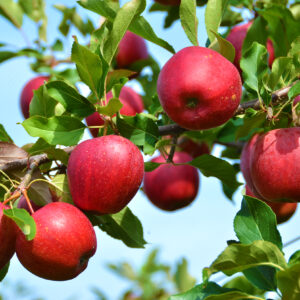
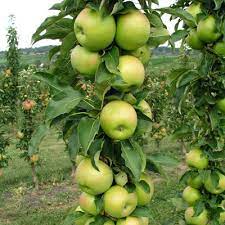
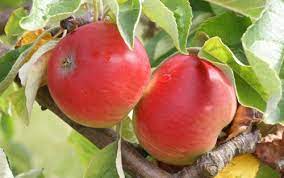
Reviews
There are no reviews yet.